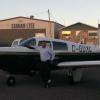Glide slope not coming in
-
Members Online
- Justin Schmidt
- PeterRus
- Flyler
- Slick Nick
- Fly Boomer
- jma201
- AndreiC
- cferr59
- donkaye
- Pinecone
- Echo
- amillet
- Jim F
- PMcClure
- MattD89
- bradp
- NickG
- Fredo0709
- exM20K
- Marc B
- EricJ
- A64Pilot
- kortopates
- TCC
- redbaron1982
- Rick Junkin
- BlueDun
- 201Steve
- Utah20Gflyer
- turbofan
- Aerodon
- raymondscott0321
- Alan Fox
- TNIndy
- rahill
- irishpilot
- OSUAV8TER
- DRJP79
- Marc_B
- hbpil
- kaba


Recommended Posts
Join the conversation
You can post now and register later. If you have an account, sign in now to post with your account.